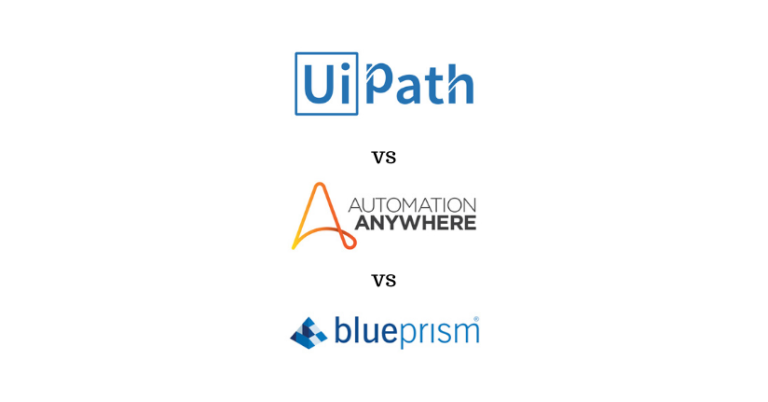The ability to access, analyze, and act on data is a critical component of modern decision-making.
Self-service analytics plays a key role in empowering users across an organization to do just that. With successful execution, this approach provides numerous benefits, including increased business agility, improved data literacy, and the democratization of data. By aligning data with business goals, a self-service analytics program can identify insights relevant to the needs of its users. This allows businesses to make data-driven decisions more quickly, adapt to market changes more successfully, and ultimately deliver better results.
Table of Contents
Defining Self-Service Analytics
Self-service analytics refers to a data analytics approach that empowers end-users to perform data analysis tasks without relying on IT or data science teams. In other words, it enables users to access, explore, and analyze data independently using self-service analytics tools.
Self-service analytics differs from traditional analytics in several ways. Traditional analytics often involves a centralized team responsible for collecting, storing, and analyzing data. The team then creates reports and visualizations for the business users, who may not have the technical skills to manipulate the data themselves. In contrast, self-service analytics places more power in the hands of the end-users, enabling them to work with data in real time, explore it in different ways, and derive insights that can drive faster decision-making.
Benefits of Self-Service Analytics:
1. Faster Decision-Making: One of the primary benefits of self-service analytics is that it enables users to work with data in real time, enabling faster decision-making. This means that users can explore data on their own, derive insights, and make decisions quickly, without having to rely on a centralized analytics team.
2. Increased User Engagement: Self-service analytics empowers end-users to work with data independently, making it more likely that they will engage with and explore the data. This can lead to increased adoption of data-driven decision-making and a greater understanding of the business impact of data.
3. Reduced Dependence on IT: With self-service analytics, end-users can perform data analysis tasks on their own, without relying on IT or data science teams. This frees up the IT and data science teams to focus on more complex tasks, such as data modeling and architecture.
4. Improved Data Quality: Self-service analytics tools often include features that enable end-users to ensure data quality, such as data validation and error checking. This can lead to improved data accuracy and a better understanding of the quality of the data being used.
5. Increased Agility: Self-service analytics enables end-users to quickly explore and analyze data, which can lead to increased agility in decision-making. It also makes it easier to respond to changing business needs and market conditions.
Identifying Business Needs
Identifying and understanding business needs is a critical step in the successful implementation of self-service analytics. It is essential to identify what business problems self-service analytics can address and how they can provide value to the organization.
One of the key benefits of self-service analytics is that it enables end-users to explore and analyze data on their own, leading to faster decision-making and increased agility. However, to achieve these benefits, it is important to understand the specific business needs that self-service analytics can address.
To identify business needs, it is essential to gather input from stakeholders, including business leaders, data analysts, and end-users. This can be done through surveys, interviews, or focus groups, and can help prioritize and identify what analytics capabilities should be offered.
Some of the key steps in identifying business needs for self-service analytics include:
1. Identify Pain Points: Start by identifying areas of the business where there are pain points or inefficiencies that could be addressed through self-service analytics. For example, are there challenges with accessing or analyzing data, or are there areas where decision-making is slow or cumbersome?
2. Prioritize Business Objectives: Once pain points have been identified, it is important to prioritize business objectives that self-service analytics can address. This could include improving customer satisfaction, reducing costs, increasing revenue, or improving operational efficiency.
3. Define Key Metrics: Once business objectives have been identified, it is important to define key metrics that will be used to measure success. For example, if the objective is to improve customer satisfaction, metrics could include customer retention, NPS scores, or customer feedback.
4. Identify Data Sources: Once key metrics have been identified, it is important to identify the data sources that will be needed to track and analyze them. This could include internal data sources, such as CRM or ERP systems, as well as external data sources, such as social media or third-party data.
5. Determine Analytics Capabilities: Finally, based on the identified business needs, it is important to determine what analytics capabilities should be offered. This could include dashboards, reports, ad hoc analysis, or predictive modeling.
Self-Service Analytics: Keys for Execution
To make self-service analytics effective, organizations need to establish a streamlined system that facilitates the process of transforming business questions into data-supported answers, removing obstacles like delays and false starts. This, in turn, reduces the time taken to derive insights from data.
Building trust is vital to ensure the success of self-service analytics. Establishing trust and credibility in all aspects of self-service analytics is crucial, including:
Data and AI Governance
Proper implementation of governance can enhance data trust across an organization, enabling employees to make confident decisions based on company data. This can also bolster trust in data scientists’ analysis and models, leading to increased accuracy resulting from improved data quality.
Data and AI governance play a critical role in modernizing companies and transforming data and AI systems into valuable organizational assets. Governance is not just about risk mitigation but also about building trust and confidence among employees in their ability to handle data in a self-service setting.
Effective governance should not stifle innovation but rather enable it. Teams should have a clear understanding of different stages of development, such as proofs-of-concept, self-service data projects, industrialized data products, and the corresponding governance requirements. While allowing for exploration and experimentation, teams should also be able to identify when self-service projects or proofs-of-concept are ready for funding, testing, and assurance to be transformed into an industrialized, operationalized solution.
Taking a long-term approach to organizational change can lead to more robust governance practices. It’s important to consider how decisions about data access and use will impact the organization in the long run and to establish a governance program that aligns with these goals. By doing so, organizations can not only reduce their liability but also create a strong foundation for data and AI governance that supports innovation and growth.
Data Quality
To ensure the effectiveness of self-service analytics, business users must have confidence in the quality of the data they are using. This requires assigning someone to take responsibility for the data’s regular updating, formatting, and appropriate usage. Teams must establish clear roles and assign specific individuals to set definitions, metrics, categorization rules, and goals. For instance, they need to determine who will be responsible for evaluating data quality, and what criteria will be used, such as completeness, validity, or timeliness. Defining roles and responsibilities is the first step toward achieving accuracy and consistency.
To ensure high-quality data that is easily accessible in a consistent manner and compliant with policies and regulations, many organizations assign these tasks to a data steward. This person is responsible for managing and overseeing the organization’s data assets and helps business users by providing the necessary support.
Bring in Non-Data Experts
The best self-service analytics products are developed collaboratively, with technical data professionals and business individuals working together to create a product that is easily analyzed, reused, and co-created. With increased access to data, business users can work alongside experts to ensure proper subject matter expertise and context, which leads to faster results. Effective collaboration between technical professionals, business individuals, and advanced data experts, combined with appropriate tools and training, can lead to quicker business outcomes, better data insights, a clearer understanding of critical metrics, and more efficient processes.
Trust Insights
To ensure that self-service analytics provides valuable insights to managers and executives, it’s crucial to establish trust in the processes and tools used. This involves implementing, maintaining, and validating these tools properly, as well as communicating clearly about the data sources, methods, and limitations of the analysis. When trust is built in the insights provided by self-service analytics, it leads to informed decision-making and increases the overall value of these projects.
For organizations to achieve tangible business value, their self-service analytics initiatives must meet certain criteria.
- Firstly, they should be driven by a thorough understanding of the business, taking into account specific problems and obstacles and identifying how data can help solve them while being tied to business objectives and key performance indicators (KPIs).
- Secondly, self-service analytics should encourage collaborative engagement between IT and business teams rather than existing in isolation.
- Additionally, they should be governed and have appropriate guidelines in place to ensure proper usage.
- Lastly, self-service analytics should be sustainable and reproducible for future projects, freeing up resources for identifying key opportunities for value creation and operationalization.
Measuring Success
Measuring the success of self-service analytics initiatives is critical to ensuring that the organization is realizing the expected benefits from the implementation. It is essential to track key metrics that demonstrate the value of self-service analytics and identify areas for improvement and future investments.
Some of the key metrics that organizations can track to measure the success of self-service analytics initiatives include:
1. User Adoption Rates: One of the key metrics to track is user adoption rates. This measures the number of end-users who are actively using the self-service analytics tools. High adoption rates indicate that end-users are finding value in the tools and that the organization is realizing the expected benefits.
2. Time-to-Insight: Another important metric to track is time-to-insight. This measures the amount of time it takes for end-users to access and analyze data. A shorter time-to-insight indicates that end-users are able to make decisions more quickly, leading to faster time-to-market and improved competitiveness.
3. Cost Savings: Cost savings is another important metric to track. This measures the amount of money saved by using self-service analytics tools instead of relying on centralized analytics teams. Cost savings can come from reducing the need for IT support, improving operational efficiency, or making more informed decisions that lead to cost savings.
4. Improved Data Quality: Improved data quality is another metric to track. This measures the accuracy and completeness of the data being used in the self-service analytics tools. Improved data quality can lead to better decision-making and a greater understanding of the business impact of data.
5. Business Impact: Finally, it is important to track the business impact of self-service analytics. This measures the impact of self-service analytics tools on key business objectives, such as customer satisfaction, revenue growth, or operational efficiency.
By measuring the success of self-service analytics initiatives using these key metrics, organizations can identify areas for improvement and guide future investments. For example, if user adoption rates are low, it may be necessary to provide additional training or support to end users. Similarly, if time-to-insight is long, it may be necessary to optimize data integration or data quality processes.
Addressing Common Challenges
While implementing self-service analytics can bring numerous benefits, organizations often face challenges that can impede the success of the initiative. Here are some of the most common challenges and strategies to address them:
1. Data Quality Issues: Data quality issues can cause inaccurate insights and poor decision-making. To address this challenge, organizations need to establish clear data governance policies that define data ownership, data quality standards, and data management practices. It is also important to implement data profiling and data cleansing tools to identify and fix data quality issues.
2. Lack of User Adoption: Lack of user adoption is another common challenge. End-users may be resistant to change or lack the necessary skills to use the self-service analytics tools. To address this challenge, organizations need to provide adequate training and support to end users. Training should be tailored to different user levels, and support should be readily available when users need help.
3. Insufficient Training: Insufficient training can lead to frustration and user abandonment of self-service analytics tools. To address this challenge, organizations need to provide comprehensive training programs that cover all aspects of self-service analytics tools. This includes training in data visualization, data exploration, data modeling, and data analysis. Additionally, organizations can offer on-demand training resources, such as videos and online tutorials, to support ongoing learning.
4. Limited Data Access: Limited data access is another common challenge. Users may not have access to all the data they need to make informed decisions. To address this challenge, organizations need to establish clear data access policies and protocols. This includes identifying who can access which data sets and establishing security protocols to protect sensitive data.
5. Lack of Governance: Lack of governance can lead to inconsistency and errors in data analysis. To address this challenge, organizations need to establish clear governance policies and processes that define how data is managed, stored, and analyzed. This includes identifying data stewards and establishing processes for data modeling, data integration, and data analysis.
Summing Up
Implementing self-service analytics can be a game-changer for organizations seeking to extract valuable insights from their data. However, it requires a well-planned approach that involves a collaborative effort between technical and business teams, proper governance, and a clear understanding of business objectives and KPIs. By following the best practices, organizations can realize the full potential of self-service analytics, including faster decision-making, improved data insights and increased overall impact and value. With the right approach, self-service analytics can be a valuable tool for driving business success.













